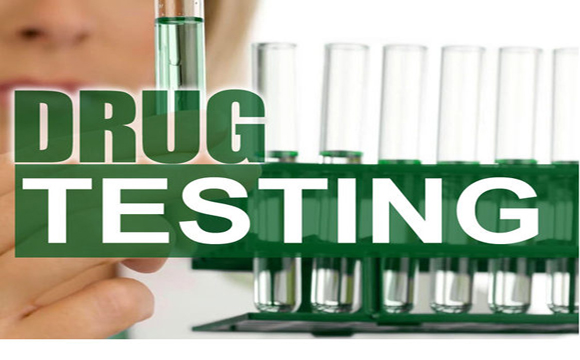Is it time for random drug testing of high school student-athletes?

Some advocates believe that the use of drugs improves sports by giving athletes a competitive edge while others believe drugs damage the game as well as the health and safety of athletes. To combat these drug issues, professional sports such as football and basketball have initiated random drug testing. Knowing that random drug testing is commonplace in professional sports, the critical questions to be asked are: Is it time for random drug testing of high school student-athletes? What legal cases support the use of random student drug testing? What does research say about the value of random student drug testing? What are the cost implications of testing?
Random drug testing of students can come in different forms such as urine or hair samplings to test for marijuana, cocaine, PCP, opiates, methamphetamine, etc. During random testing, participating schools select a random sample of students from the school population who participate in competitive extracurricular activities. The goal of drug abuse programs for participating schools is to successfully reduce drug abuse among students. This is done by deterring students from using drugs, identifying students who are using drugs and providing appropriate interventions and treatment services to combat drug abuse according to the National Institute on Drug Abuse.
While student privacy is a major issue, two U.S. Supreme Court cases in 1995 and 2002 supported school districts’ position for random drug testing of high school students participating in competitive extracurricular activities. From these cases, the Supreme Court cited that deterring student drug use was more important than student privacy.
Based on a 2008 report by the Student Drug Testing Coalition, approximately 16.5 percent of U.S. school districts participate in random student drug testing programs. School districts in New Jersey and Kansas City are proposing random drug testing for their high school students. Specifically, Rockhurst High School in Kansas City is participating in mandatory random drug testing using hair samples for the 2013-2014 school year according to a report by Fox News. Principal Greg Harkness was cited saying, “Our point is, if we do encounter a student who has made some bad decisions with drugs or alcohol, we will be able to intervene, get the parents involved, get him help if necessary, and then help him get back on a path of better decision making and healthier choices for his life.”
Research studies have looked at the effects of school districts’ students participating in drug testing programs compared to students who did not participate in these programs. For example, the findings of a 2010 study released by the National Center for Education Evaluation comprising of seven school districts with 36 high schools and more than 4700 students found: (1) “students involved in extracurricular activities and subject to mandatory-random student drug testing reported less substance use than comparable students in high schools without drug testing and (2) the program had no “spillover effects” on the substance use reported by students who were not subject to testing and had no effect on any group of students’ reported intentions to use substances in the future.” In a 2003 ground-breaking study at the University of Michigan, slightly more students at schools with drug-testing policies (21 percent) were using drugs than students at schools without drug testing policies (19 percent) according to a report by Global Post.
In a stiff economy, school districts have to make sure that their funds are spent wisely and, at the same time, maintain the academic performance, health and safety of their students. Drug testing administered at the high school level cost between $15 to $35 dollars per student. According to a report by The New York Times, The Florida High School Athletic Association began drug testing 600 student athletes at a cost of $100,000 in 2007 but ended the testing program due to inadequate funding within the first year. The Illinois High School Association started drug testing 650 students at a cost of $100,000 in the 2008-2009 school year and found no positive test results. Also, the University Interscholastic League in Texas drug tested 10,117 student athletes in the 2007-2008 school year but reduced its testing sample to 3,311 student-athletes four years later due to budgetary pressures. Of this sample, nine student-athletes tested positive for drug use.
When we learn of students testing positive for using performance-enhancing drugs and subsequently becoming ill or losing their lives, this adds to the concern or debate for more random drug testing of high school students-athletes. In the famous expression of former first lady Nancy Reagan, schools should encourage all of their students to, “Just say no” to drugs. Schools must also employ various treatment interventions and counseling services, as well as establish partnerships with drug-free professional athletes through the National Football League, National Basketball Association, etc. to serve as role models for high school student-athletes.
Dr. Ronald Holmes is the author of four books, “Education Questions to be Answered,” “Current Issues and Answers in Education,” “How to Eradicate Hazing and “Professional Career Paths.” He is publisher of “The Holmes Education Post,” an education focused Internet newspaper. Holmes is a member of the National Association of School Superintendents, former teacher, school administrator and district superintendent. He can be reached at [email protected].

